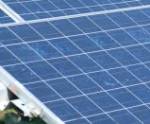New research undertaken in the USA into the tiny light absorbing particles in solar cells – called quantum dots – may have uncovered ways to multiply the energy output of individual electrons, increasing the efficiency of the solar panels and resulting in more electricity from the same amount of absorbed light.
Results published by Mark Lusk and colleagues at the Colorado School of Mines in the April edition of “ACS Nano“” supports the theory of multiple-exciton generation (MEG), which states that an “excitons” – electrons which have absorbed light energy – can then spread that energy to other electrons.
Lusk and his team found that tailoring the size of quantum dots improves the MEG process. Each dot best-suits a region of the solar spectrum, with smaller quantum dots performing MEG better within their region than larger ones. Solar panels manufactured using quantum dots tuned in to the correct slice of the solar spectrum would be much more efficient than those not made with quantum dots.
This discovery is important, particularly for the commercialisation of MEG and for solar energy applications.
According to Lusk, “We can now design nanostructured materials that generate more than one exciton from a single photon of light, putting to good use a large portion of the energy that would otherwise just heat up a solar cell.”
MEG theory has been a controversial sticking point within the scientific community, but Lusk’s quantum dot project involved the US National Renewable Energy Laboratory, which is devoted to furthering innovations that will impact renewable energy technologies, and the National Science Foundation (NSF).
“These results are exciting because they go far towards resolving a long-standing debate within the field,” said Mary Galvin, a program director for the Division of Materials Research at NSF. “Equally important, they will contribute to establishment of new design techniques that can be used to make more efficient solar cells.”












































